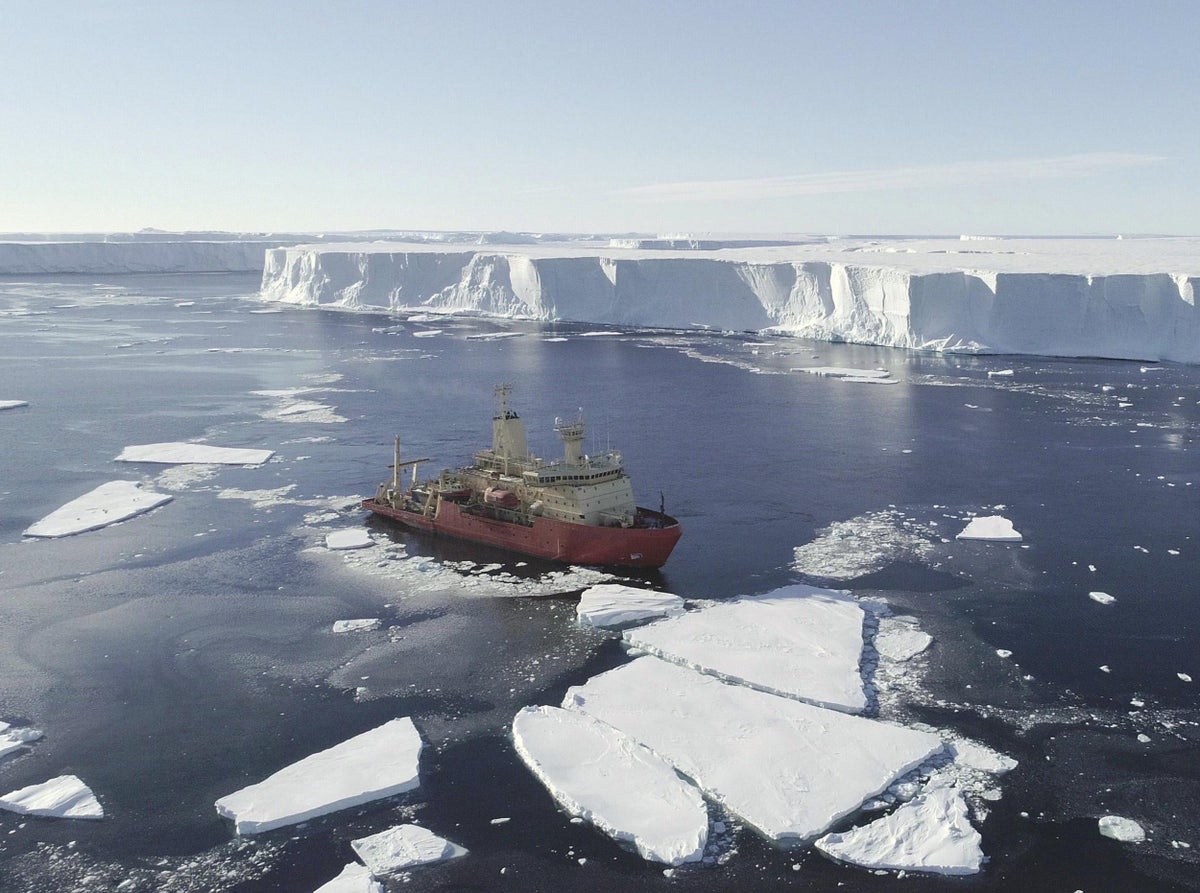According to new statistics, the ice shelf might collapse completely in as soon as five years. One scientist claims, “We are dealing with a phenomenon that no human has ever observed.” “We don’t have anything like this.”
- As we subsequently learned from satellite photographs, a mélange of ice roughly 21 miles wide and 15 miles deep had split apart and spread into the sea in 48 hours or so.
- Thwaites Glacier is the largest on the West Antarctic ice sheet, which holds enough ice to raise sea levels by 10 feet. It is the same size as the state of Florida.
- The icebergs and sea ice that fell were not part of the glacier but rather a collection of icebergs and sea ice that had formed around it.
- The ice split I observed was not a freak occurrence, as it turned out.
- They detailed the finding of fractures and fissures in the Thwaites Glacier eastern ice shelf, warning that the ice shelf might split like a cracked car window in as little as five years.
- The entire West Antarctic ice sheet will flow into the sea if Thwaites Glacier
- Around the world, 250 million people live within three feet of high tide lines.
- A ten-foot rise in sea level would be catastrophic for the entire world.
- However, predicting ice sheet melting and the consequences for future sea-level rise is challenging.
One of the most challenging aspects of the climate problem is how quickly significant changes occur. Onboard the Nathaniel B. Palmer, a 308-foot-long scientific research vessel, I traveled in front of Antarctica’s Thwaites Glacier in 2019. One day, we were sailing in the calm waters in front of the glacier. The next day, we were surrounded by icebergs the size of aircraft ships.
As we subsequently learned from satellite photographs, a mélange of ice roughly 21 miles wide and 15 miles deep had split apart and spread into the sea in 48 hours or so. It was a disturbing experience.
Thwaites Glacier is the same size as the state of Florida:
The ice sheet’s cork contains enough ice to raise sea levels by 10 feet. The icebergs and sea ice that fell were not part of the glacier but rather a collection of icebergs and sea ice that had formed around it. Even so, the idea that it could all come crashing down in an instant was terrifying.

As it turned out, the ice break I witnessed was not an unusual event. Scientists from the International Thwaites Glacier Collaboration, a $25 million five-year research collaboration between the National Science Foundation and the Natural Environment Research Council in the United Kingdom, recently presented their newest results.
They detailed the finding of fractures and fissures in the Thwaites Glacier eastern ice shelf, warning that the ice shelf might split like a cracked car window in as little as five years. Erin Pettit, a glaciologist at Oregon State University and one of the ITGC’s leading primary investigators, subsequently told me, “It won’t spread out into the sea as rapidly as what you witnessed when you were down there.”
Given the continuous fight for American democracy and the death toll from the Covid pandemic, the loss of an ice shelf on a distant continent inhabited by penguins may not appear to be a significant occurrence.
The West Antarctic ice sheet is one of the most critical climatic tipping points on the planet:
If Thwaites Glacier fails, the whole of the West Antarctic ice sheet will flow into the sea. Two hundred fifty million people live within three feet of high tide lines worldwide. A ten-foot rise in sea level would be a global disaster. It’s farewell not only to Miami but to nearly every low-lying coastal city on the planet.
However, predicting ice sheet melting and the consequences for future sea-level rise is challenging. Depending on various emissions scenarios in the current Intergovernmental Panel on Climate Change report, we may see as little as one foot of the sea-level cliff by the end of the century. Or over six feet (of course, rising waters won’t stop in 2100, but that date has become a frequent benchmark).
Richard Alley, a glaciologist at Penn State University and one of the world’s best ice specialists, says, “The difference between those [models] is a lot of lives and a lot of money.” “Thwaites is the most likely region to generate [the worst circumstance],” Alley adds.
“If there is going to be a climatic calamity, it will undoubtedly begin in Thwaites,” Ohio State glaciologist Ian Howat once told me. The difficulty is that figuring out what’s happening at Thwaites Glacier is a nightmare.
Check Whyd for more news.